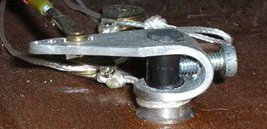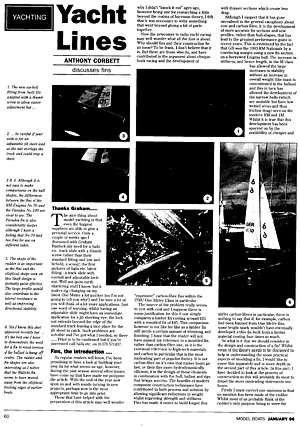 Antohny Corbett discusses making fins in this 1996 Model Boats article.
Antohny Corbett discusses making fins in this 1996 Model Boats article.
Published with permission from Model Boats. Click image for pdf (1.4 Mb)
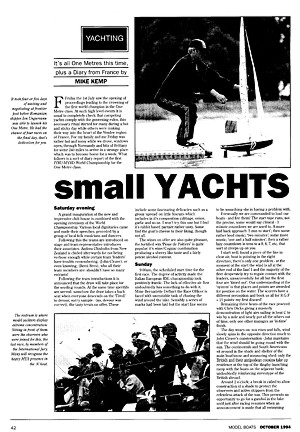 Mike Kemp offers another report from the 1994 IOM Worlds.
Mike Kemp offers another report from the 1994 IOM Worlds.
The article originally appeared in the 1994 October issue of Model Boats. Published here with permission. (Link ?? www.modelboats.co.uk seems to be broken ?)
Click image for pdf (ca 1.8 Mb)
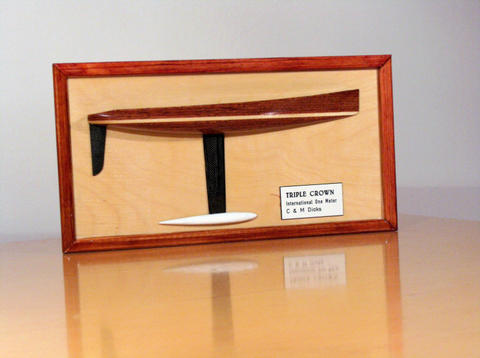
Our unchallenged woodworking guru Olle Martonen who has previously built three wooden IOMs has now produced a half-model in 1:4 scale of the Triple Crown. A similar model that Olle built earlier is used as first price for the Finnish IOM ranking series winner...
By popular demand, below also a picture of the first 1:4 model:
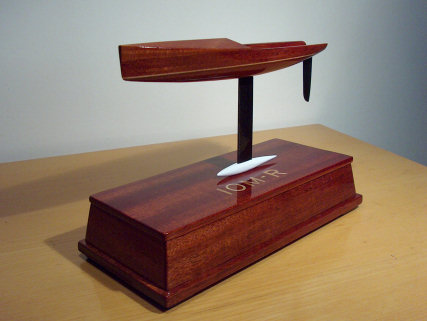
Although we've already built a number of finboxes, I've forgotten to publish the plan - so here it is. As the Noux Mk2 is still somewhat of a prototype this finbox has a long 27.5 x 5 mm slot for the mast which will allow optimisation of the best mast position and rake angle during testing. So as not to carry a whole lot of extra water in the boat we made the mast-box narrow, 5mm, which means that the lower end of the mast needs to be an aluminium extrusion of 5mm width... A future Noux Mk3 might again have a more traditional mastbox for a round mast when we have found the optimal position.
One part of our continuing CNC-mill upgrade is to connect a jog-pendant to the mill which will enable jogging and some other manual controls in EMC2. Here are some pictures and notes of the present status.
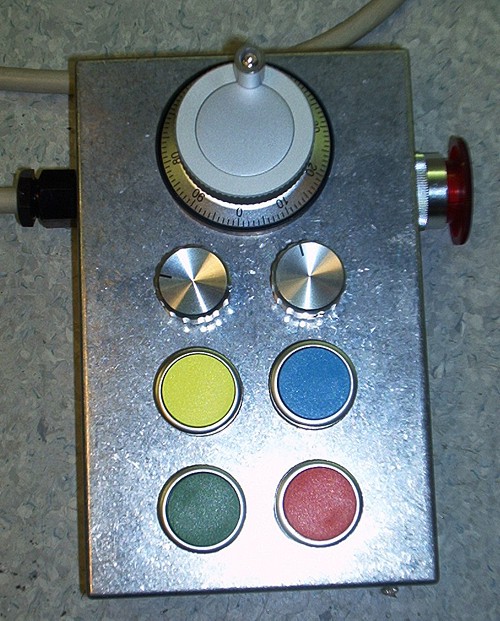
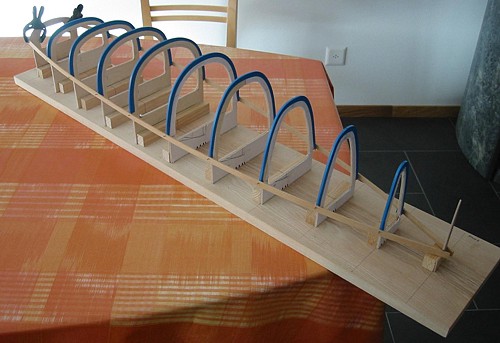
Boris from Switzerland sent me these two pictures of his Noux project which he has just started - thanks !
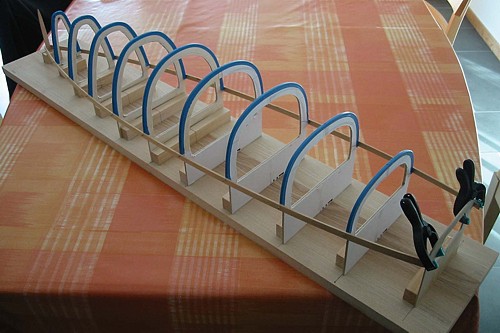
Rob Guyatt, designer and builder of RMG winches has answered to the challenge from the super-quick arm-winch camp by sourcing a new motor for the RMG280D (the most popular model for an IOM). The motor is about 15% faster than the previous model, while torque is about the same or slightly less.
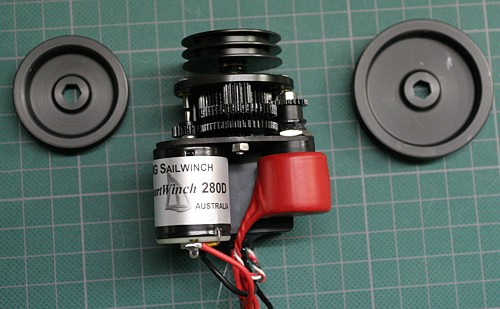
Couple the new faster winch with a bigger diameter drum, which trades torque (force on the sheeting line) for speed, and Rob has been measuring sheeting times, using a typical 310mm travel, which are very similar to what is achieved with an arm-winch. Above the RMG 280D with standard 26 mm drum in the middle, 32mm drum on the left, and 42mm drum on the right.
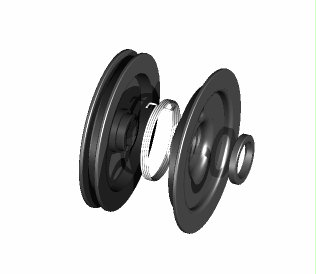
Here's the latest from Rob's drawing board (well, CAD program...). A spring loaded drum ! If I understand correctly one spool of the drum is fixed (and could be a spiral spool), and the sheeting line is connected to this spool. The other spool is spring loaded and will take out any slack in the return line of an 'endless loop' type sheeting system. Especially useful if the sheeting spool is of the spiral type, since the amount of sheeting line travel per revolution is then variable, and the spring loaded spool absorbs this variability.
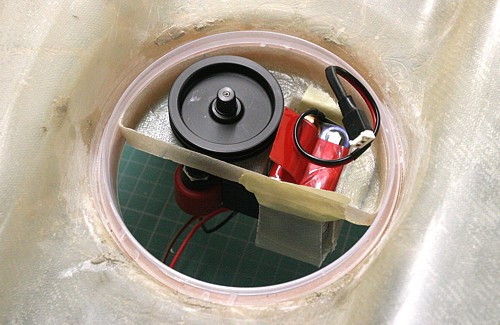
Here the new RMG is sitting in the Noux RC-tray. There's just about room for the largest 42mm drum (flange outer diameter is about 50 mm). There's a thumb-screw on the drum, but it's a bit too high - the lid won't go on like this, so perhaps I'll grind down the thumb screw to about half its height. I've also taped on some supports for the battery, and a 6-cell AA battery fits comfortably. The idea for the rudder servo is that it will hang in an L-shaped bracket from the vertical wall of the RC-tray, final design and wether it will be stiff enough is still to be confirmed.
Update 2007Feb14: Rob has now finalized the design of the spring-loaded drum design and is offering it for sale at www.rmgsw.comÂ
Jari sent me some pictures of tiller arms that he machined during the weekend.
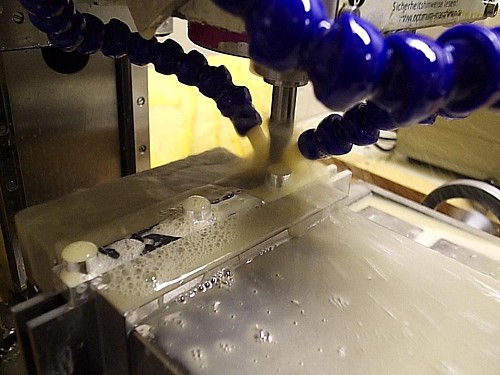
These parts need to be machined in three separate stages, here's stage 1 where the tillers are first roughed and then finish milled.
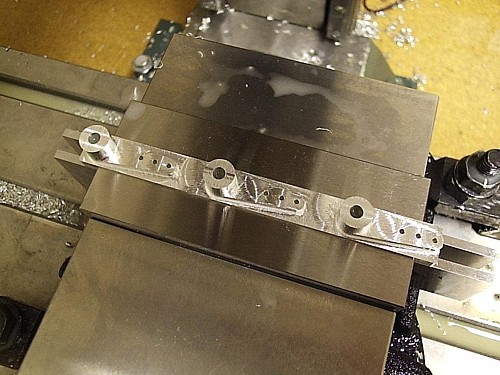
Here's what the parts look like after the first stage. After finishing the hole for the axle and three holes for the push-rod are drilled. In stage two the parts are turned 90 degrees and fixed using a jig. A hole can then be drilled and tapped for a set-screw that will tighten against the rudder axle.
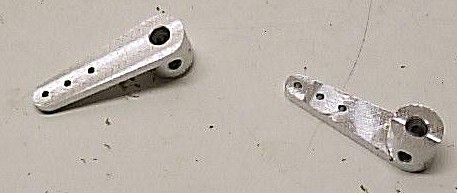
In stage three the whole thing is flipped over and the bottom of the stock material is machined off, which results in these completed parts.
These are still prototypes, for the Noux Mk2 I'd like to see two things: (1) assembly of the boat without tools, i.e. the attachment of the tiller arm to the rudder axle should not require any special tools (allen key, screw driver, etc.). This could be achieved with the current design simply by using a screw with a thumwheel. (2) a fixed relative position between tiller and rudder axle, i.e. when I attach the rudder I want to be sure it sits straight without having to check it everytime and possibly re-trim on the transmitter. A low-tech solution is to file or grind a flat part on the rudder axle onto which the set-screw pushes. If anyone has better ideas I'd be glad to hear about them !
Update 2006 Dec 05:
Johan Prak from the Netherlands sent me a picture of his homemade rudder fitting. A very simple design that anyone can make:
